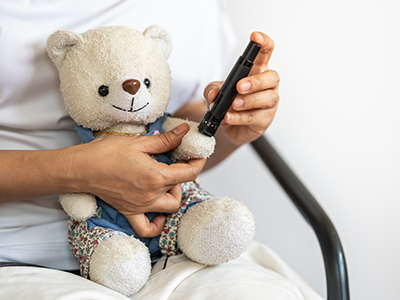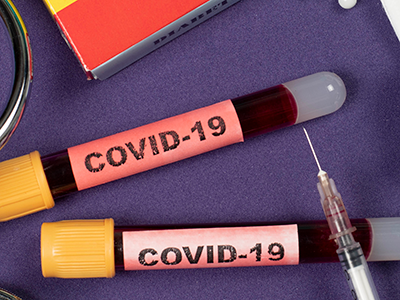Sending your child to college can feel mixed with excitement and concern especially when managing Type 1 Diabetes (T1D). Navigating blood sugar control in a new setting involves insurance logistics, supply backups and a new independence. With thoughtful planning, this next chapter can be safe, fun and empowering. Here are 10 tips for a safe and successful transition.
- Build a strong support network
Provide your teen with tools and communities that make them feel seen and supported:
- Encourage them to join groups like The Diabetes Link, a national organization with campus chapters and online resources for students living with T1D.
- Suggest attending events or joining peer groups to share experiences and strategies for living with diabetes in a college setting.
- Promote connecting with other students who understand the challenges of diabetes to help reduce feelings of isolation.
- Make sure they understand their legal rights and how to secure needed accommodations.
- Coordinate medical care before they leave
- Have your student sign up for the provider’s patient portal to make communication easier.
- Save the diabetes care team’s phone numbers in their phone for quick access during emergencies.
- Schedule medical appointments well in advance for winter and summer breaks when slots fill quickly.
- Set up CGM or pump data sharing through platforms like Dexcom Clarity, Tandem T:Connect or Glooko so the care team can monitor remotely.
- Stock up on diabetes supplies for school
- Include long-acting insulin as a backup in case of pump failure.
- Pack extra CGM sensors, transmitters, and a receiver to avoid gaps in monitoring.
- Bring a blood glucose meter and test strips in case the CGM stops working.
- Keep ketone strips, a glucagon kit, and quick-acting treatments for low blood sugar on hand.
- Store non-perishable snacks and ensure insulin is kept in a mini fridge.
- Understand insurance coverage
- Check whether the insurance plan covers care in the state where school is located.
- Identify a local pharmacy that accepts the insurance plan.
- If on Medicaid, request a travel or vacation override for up to a 90-day supply of prescriptions before leaving.
- Consider enrolling in the school’s health plan if coverage is limited.
- Prioritize safety and accessibility
- Make sure your teen wears a medical ID bracelet or necklace and stores health information on their phone or smartwatch.
- Inform the RA, roommates and close friends about your teen’s diagnosis and what to do in an emergency.
- Learn the location of the student health center and the nearest emergency room.
- Keep a backup insulin delivery plan ready in case of pump failure.
- Secure accommodations through the Office of Disabilities
- Request permission to keep diabetes supplies in class and to take snack or bathroom breaks during exams.
- Ask for the ability to eat and drink in class as needed.
- Secure access to a refrigerator in the dorm for insulin storage.
- Consider the benefits of having a roommate who can help in an emergency instead of requesting a private room.
- Support healthy nutrition and exercise
- Make sure your teen establishes a balanced eating routine at the start of each semester.
- Suggest using carb-counting tools such as food labels, school nutrition websites, Figwee or CalorieKing.
- Remind your teen to stay physically active even if they are not playing organized sports.
- Adjust insulin dosing to account for changes in physical activity.
- Teach your teen to eat quick-digesting carbs before workouts and to consume carbs with protein after workouts.
- Talk about alcohol and substance use
- Make sure your teen understands that alcohol can initially raise blood sugar but later cause dangerous lows, especially during sleep.
- Remind them to always eat before drinking alcohol and to set alarms for overnight blood sugar checks.
- Talk to your teen about how marijuana use is linked to higher A1c levels and an increased risk of diabetic ketoacidosis (DKA).
- Teach your teen to bolus appropriately for all snacks consumed while under the influence of marijuana.
- Keep the lines of communication open
- Check in regularly about academics, social life and health, not just blood sugar data.
- Send thoughtful care packages to show support.
- Respect your teen’s growing independence while staying emotionally available for guidance.
- Final tips for parents and students
- Use campus resources including health services, dining services and mental wellness programs.
- Plan ahead for study abroad trips by requesting travel overrides and packing extra supplies.
- Monitor changes in insulin needs as routines shift.
- Encourage your teen to have fun, make new friends and embrace independence while staying safe.
This article was based on a presentation by the Diabetes Team at Children’s National Hospital. Contributors include Fran R. Cogen, MD, CDCES; Carrie Zager; Alyssa Danner, BSN, RN; Sarah Roberts, MS, RDN, LDN; and Carly Berger, MA.
 https://riseandshine.childrensnational.org/wp-content/uploads/2025/08/moving-in-to-college-feature.jpg
300
400
webteam
https://riseandshine.childrensnational.org/wp-content/uploads/2017/11/childrens_riseandshine_logo.jpg
webteam2025-08-20 10:41:032025-09-12 11:27:01Sending your teen with type 1 diabetes off to college: 10 tips for a safe and successful transition
https://riseandshine.childrensnational.org/wp-content/uploads/2025/08/moving-in-to-college-feature.jpg
300
400
webteam
https://riseandshine.childrensnational.org/wp-content/uploads/2017/11/childrens_riseandshine_logo.jpg
webteam2025-08-20 10:41:032025-09-12 11:27:01Sending your teen with type 1 diabetes off to college: 10 tips for a safe and successful transition





















Leave a Comment
Want to join the discussion?Feel free to contribute!